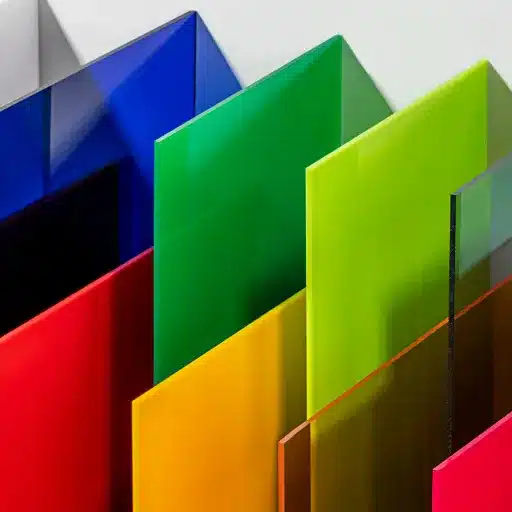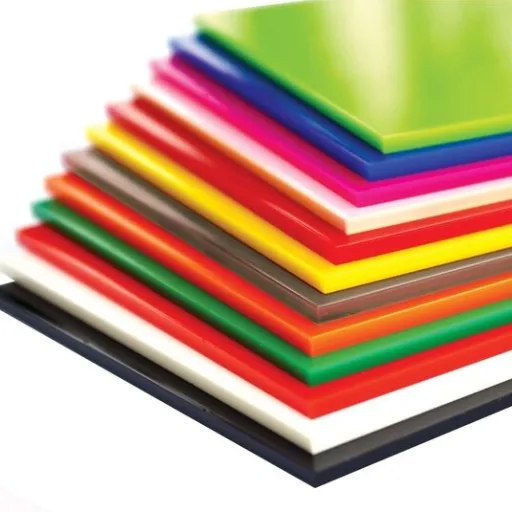In the context of manufacturing and material selection, the controversy surrounding Thermoplastic Elastomers (TPE) versus Polyvinyl Chloride (PVC) remains one of the pivotal choices for industries and individuals. Both materials have advantages and disadvantages, including, but not limited to, flexibility, durability, environmental impact, and cost. This article intends to shed light on the most important differences, benefits, and drawbacks of TPE and PVC so that you can make choices that best suit your needs. Whether your evaluation is for healthcare, consumer goods, or industrial applications, this document will provide thorough insight into these multifunctional materials.
What are the Main Differences Between TPE and PVC?

The differences between TPE and PVC are their composition, flexibility, and each material’s environmental impact. TPE or thermoplastic elastomers are engineered to possess the elasticity of rubber and the processability of plastics, thus being much easier to mold and more flexible. On the other hand, PVC or polyvinyl chloride is more rigid in its natural state and often needs plasticizers to attain flexibility. Moreover, TPE is regarded as more eco-friendly due to being more recyclable and having a lower emission of hazardous materials during production compared to PVC, which can emit harmful chemicals such as dioxins during manufacturing and disposal. Thus, TPE is favored for flexibility and environmental issues, while PVC is used when low cost and durability are needed in applications that are not demanding.
Understanding the Properties of TPE
Thermoplastic elastomers (TPEs) are unique polymers with elasticity, resilience, and ease of processing. They are composed of hard and soft segments on a molecular level, which allows them to process like thermoplastics yet behave like elastomers. That “dual behavior,” as we could call it, leads to incredible elasticity and durability, which is why TPEs are needed in so many industries.
One of the most impactful characteristics of TPE is its ability to endure repetitive mechanical strain without undergoing permanent fatigue, modeling, or damage. This property improves utility for sealing systems, medical devices, and consumer products. Moreover, Thermoplastic elastomers (TPEs) have remarkable thermal stability and consistent performance at varying temperatures. Exposure to UV radiation, chemicals, and weathering makes modern TPEs more resistant, ensuring durability for outdoor applications.
TPEs perform better than traditional elastomers when assessing the impact on the environment due to their lack of hazardous additives and materials. New advancements in TPE technology are aimed at sustainability, enabling bio-based and low-footprint alternatives while maintaining the same mechanical and chemical performance as standard formulations. With those attributes, TPEs have become increasingly appealing to industries focused on innovation while also being an environmental concern.
Understanding the Properties of PVC
Polyvinyl Chloride (PVC) is one of the most common thermoplastics because of its unique attributes. Its durability and resistance to chemicals make PVC very flexible, and it can be customized to cater to a variety of industrial needs. From a mechanical point of view, PVC has high tensile strength and rigidity, making it useful in construction for pipes, window profiles, and flooring. Furthermore, PVC withstands exposure to acids, alkalis, and other corrosive chemicals, vital in chemical processing industries because of its lack of chemical resilience.
PVC also contributes to fire safety, and chlorine is a significant component, making PVC self-extinguishing and flame-retardant. Therefore, it is helpful for electrical cable insulation that requires heavy compliance with fire safety standards. The material is also easily extrudable, moldable, or blendable with other additives, which widens its use in innovative product design. Also, new formulations of PVC have led to the creation of flexible variants extensively used in medical tubing, artificial leather, and packaging films. All these features make PVC very cheap, readily available, and recyclable.
Key Differences in Elasticity and Hardness
The differences in elasticity and hardness are among the most essential differences in types of PVC. This difference comes from the specific formulation used and the addition of plasticizers. Rigid plastic PVC, or uPVC, has a brittle, complex structure with low flexibility. This makes it ideal for use in piping, window frames, and construction—the lack of plasticizers in rigid PVC results in high durability and resistance to deformation under applied force.
On the contrary, flexible PVC is the opposite. It has plasticizers added that increase elasticity, hence increasing flexibility and pliability. This type of PVC is used in stretchable and adaptable items such as insulators for electrical cables, hoses, and flexible packages. Rigid PVC is classified as D range, while flexible PVC is softer and more elastic and falls in the A range of the Shore hardness scale.
What Are the Advantages and Disadvantages of TPE?
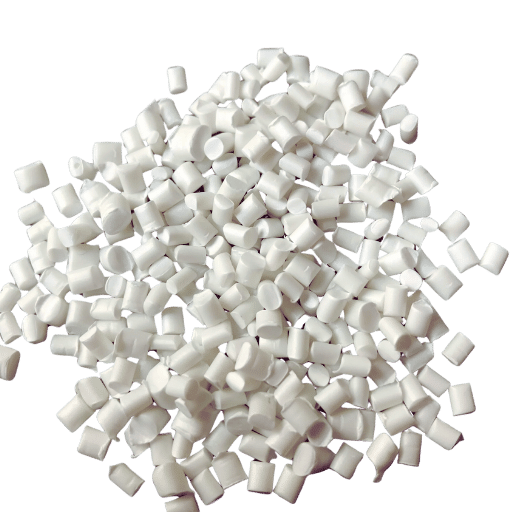
Like many polymers, Thermoplastic Elastomers (TPEs) have distinct advantages that increase their versatility and use across many sectors of the economy. Some benefits include flexibility, ease of processing, recyclability, and multi-functionality. Their rubber-like elasticity and ease of processing make TPE polymers ideal for industries that require strength and flexibility, such as automotive, medical, and consumer products. Moreover, the recyclable nature of these elastomers could enhance the sustainability efforts of their manufacturers.
Nonetheless, TPEs have some disadvantages. For example, compared to thermoset rubbers, TPEs have low thermal and chemical resistance, thus limiting their adoption in high-temperature or chemically aggressive environments. While TPEs are durable, some more conventional or old-fashioned materials put them under extreme conditions for an extended period. Because of these factors, TPE should be evaluated for specific applications without assuming it will always work.
Benefits of Using Thermoplastic Elastomer
In the case of thermoplastics and elastomers, TPEs (thermoplastic elastomers) stand out thanks to their specific combination of features that boosts the efficiency of different industries such as automotive, pharmaceuticals, and consumer electronics. These TPEs can be reprocessed industrially or in a different cycle (e.g., through melting or grinding into granulate), increasing effectiveness and reducing waste, hence delivering restorative value and environmental cleanup, furthering the sustainability movement. Additionally, the lightweight characteristics of TPE polymer encourage its use in automotive and consumer electronics because performance improvement is achieved when employing less weight.
Also, TPEs offer the convenience of being easily molded, extruded, or injection molded, simplifying production processes and bringing down costs. TPEs boast flexibility and thermoplastic softness compared to other polymers, offering superior ergonomics. Thus, TPEs are the optimal polymer to manufacture medical devices, sports equipment, and wearable technology.
TPEs also have an exceptional ability to resist weather conditions. They suffer no loss in functionality when exposed to UV radiation, ozone, or high or low temperatures, making them perfect for outdoor applications such as seals, gaskets, and cable coatings. This class of polymers is unparalleled in its ability to work with numerous additives, which allow hardness, color, and chemical resistance modification to fit desired requirements.
Potential Drawbacks of TPE
While thermoplastic elastomers (TPEs) have their advantages, there are some limitations one must take into consideration. One of the most significant weaknesses is their reduced thermal resistance compared to other materials. Unlike thermoset elastomers, TPEs can soften and deform when exposed to heat, which limits their application to areas with extreme thermal conditions. Moreover, their mechanical properties, such as abrasion resistance, are often weaker when compared to thermoset materials, making them unsuitable for use in high-stress environments.
Another concern involves pricing, as some grades of TPEs are specially designed for specific applications, which can make them costlier to produce than traditional rubber materials. While TPEs are highly thermoplastic and recyclable, this sometimes leads to physical degradation during reprocessing, which can impact long-term durability. Despite these shortcomings, the evolving challenges in material science are overcoming these barriers.
Applications Best Suited for TPE
Thermoplastic elastomers (TPEs) are well suited for applications where elasticity, durability, and recyclability are needed simultaneously. Their specific material characteristics make them suitable for use in the automotive industry for sealing systems, cable sheathing, and interior trim, as withstanding wear and environmental damage is imperative. Furthermore, TPEs are extensively used in the consumer goods industry to manufacture household appliances, ergonomic grips, and flexible tubing because of their capacity to be shaped into intricate, soft, and comfy structures.
The medical industry benefits from TPEs with applications like medical tubing, seals, and wearable devices due to TPEs’ astonishing biocompatibility and resistance to sterilization processes. TPEs are also gaining popularity in the electronics industry for reliable overmolding of connectors and protective covers, which must be impact-resistant and electrically insulated. Due to their excellent shock absorption and low weight, the sports and leisure industry utilizes TPEs for footwear components and sporting equipment.
What Are the Advantages and Disadvantages of PVC?
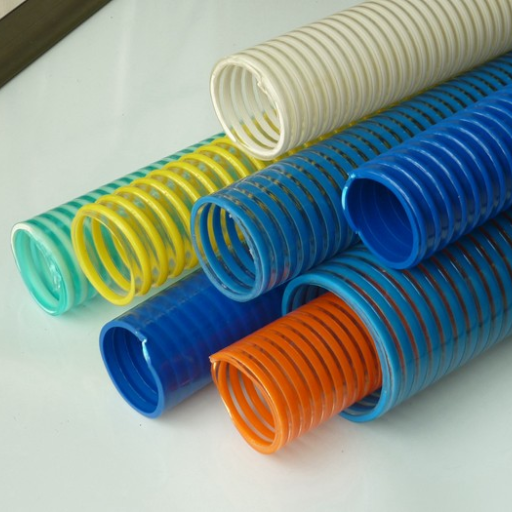
In the text, the advantages and disadvantages of PVC are highlighted, as well as some of its uses. These benefits include resistance to environmental degradation, cost-effectiveness, durability, and making construction and medical applications easier. The author does mention that PVC weighs less than other compounds, which aids in its usability, too. We cannot ignore the health hazards and the rise in PVC due to the use of hazardous chlorine. It is clear that the material is harmful to the environment, and the same level of complexity arises when considering whether it can be recycled.
Benefits of PVC Material
PVC’s versatility and practicality have made it one of the top choices across various industries. As stated in the text, other industries, such as the automotive, construction, and even industrial sectors, value gear that can withstand corrosion while being weather resistant. Thanks to its durability, these industries use it for long-term applications. Also, PVC proves indispensable in electrical wiring due to its thermal insulation properties.
Economically, PVC is useful because it is cheaper to produce than rival materials and requires little upkeep during use. Innovations on old formulations increase impact resistance and make them more flame-retardant. At the same time, biocompatible healthcare innovations improve their recyclability. Research shows that biocompatible flexible PVC is becoming popular in healthcare for items such as IV bags, catheters, and medical tubing.
Potential Drawbacks of PVC
Even with the many benefits and widespread use of PVC, some issues still need to be addressed. Manufacturing and disposing of PVC come with some harmful environmental problems, primarily linked with creating and burning the material, which gives off dioxins and other toxic substances. Also, some additives, such as plasticizers, which make the material more flexible, have been known to harm health and the environment when they leach into ecosystems.
Another concerning problem is the material’s limited capacity to biodegrade. PVC’s natural degradation is slow, exacerbating the persistent waste problem in landfills and the environment. In addition, petrochemicals such as oil and natural gas used in its manufacture add to the material’s unsustainability problems.
Lastly, even though the recycling industry has improved in recent years, the infrastructure for recycling PVC still lags behind other plastics because of the material’s complex structure and contamination problems. These issues focus on the recycling industry, which is suffering from innovation stagnation and strict environmental regulations concerning material use.
Applications Best Suited for PVC
Due to its durability, chemical resistance, and flexibility, PVC (polyvinyl chloride) is a highly versatile polymer widely utilized in many industries. A prime example is the construction industry, where pipes, window frames, and flooring materials are manufactured using PVC. In residential and commercial buildings, plumbing and drainage systems require materials that can withstand corrosion and have a long lifespan, which makes PVC ideal.
It is also essential to note that PVC is important in healthcare as it manufactures medical-grade tubing, IV bags, and blood storage containers. Its biocompatibility and ease of sterilization ensure its relevance in the field. Additionally, these goods are light in weight and require less space, making storage and transportation convenient. PVC is also preferred in manufacturing cables and wires because of its biocompatibility and ease of sterilization. Thus, PVC ensures safety and efficiency in electrical equipment while providing excellent protection against overheating and electrical discharges.
Vinyl sheets, faux leather, and decorative films. Advanced interior design uses PVC to produce low-maintenance furnishings. PVC also benefits the agricultural sector in irrigation systems, greenhouses, and silage wraps due to its ability to withstand harsh environmental conditions.
How Do TPE and PVC Compare in Terms of Environmental Impact?
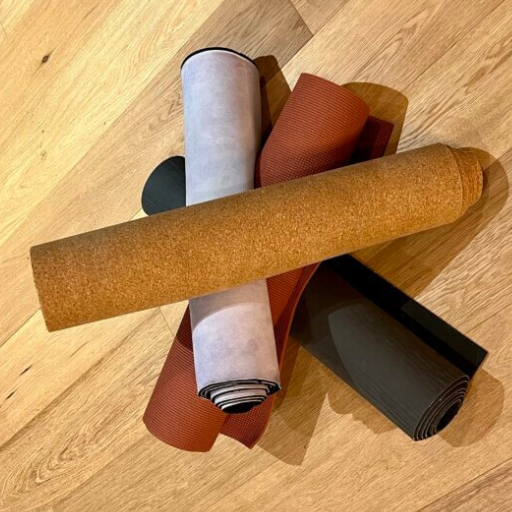
Polyvinyl chloride and thermoplastic elastomers have different environmental impacts; their impacts differ significantly. It is common for TPE to be considered the more green option because it can be recycled and does not use as many harmful additives during production. It can also be melted down several times to create new materials, helping to limit waste. However, it is more challenging to recycle PVC. This is often paired with additives like plasticizers, which can harm the environment and human health. In addition, if not adequately controlled, PVC production can produce hazardous materials such as dioxins. Progress may be made towards the recyclability of PVC, but TPE is still the greener option for a broader range of applications.
Recyclability of TPE vs PVC
The recyclability of TPE and PVC should also consider their overall environmental effects and life-cycle analysis. Thermoplastic elastomers, for instance, have better recyclability as they can repeatedly melt and remold into new shapes multiple times without losing much material. This property reduces waste and supports closed-loop systems where TPE waste can be processed into new TPE products. Moreover, the recycling of TPE avoids hazardous PVC additives, simplifying the process, making it more eco-friendly.
On the other hand, while PVC can be recycled, the need for stabilizers, plasticizers, and other chemicals makes the process more laborious and inefficient. These factors can lead to increased contamination risks during the material separation and processing phases, which lowers recycling efficiency. In addition, the disposal or incineration of PVC poses environmental concerns and health risks due to the potential release of toxic substances like chlorine and dioxins.
Environmental Friendliness of Thermoplastic Elastomer
TPEs possess a significantly improved ecological footprint when juxtaposed with PVC or vulcanized rubbers, which are recognized for their unique advantages. Their sustained competitiveness derives from their multiple reprocessing capabilities without significant loss of mechanical strength, benefiting TPE sustainability. This feature facilitates the circular lifecycle of materials by minimizing the use of virgin resources and reducing waste.
Further advancements have been made in TPE recycling and efficiency. For instance, post-industrial and post-consumer TPE waste can be reprocessed into new materials through closed-loop recycling systems. Moreover, some TPEs now have bio-based or renewable raw materials, decreasing the use of fossil fuels and thus lowering the carbon footprint from production.TPE production generally uses less energy than Thermoset rubbers since it does not require the energy-intensive vulcanization steps. In addition, TPE products emit fewer volatile organic compounds (VOCs) than their thermoset counterparts, thus observing strict environmental and health regulations on the VOCs used in consumer goods, medical equipment, and automotive parts.
Moreover, TPEs’ low weight indirectly supports sustainability because they are energy-conserving automotive parts. Automobiles incorporating TPE components gain better fuel economy and lower greenhouse gas emissions during their operational life cycles.
Impact of PVC on the Environment
Globally, polyvinyl chloride (PVC) is one of the most manufactured plastics. However, it is of great concern because of its environmental impacts. The production process requires massive amounts of energy due to reliance on non-renewable fossil fuels and Chlorine-based feedstocks, which also creates significant CO₂ emissions. Furthermore, the lifecycle of PVC risks hurting ecosystems and human beings because of the phthalates and heavy metals additives, which contain toxic substances that leach into the surrounding environment.
The lifecycle of PVC also presents a bigger challenge because of insufficient waste management, and the end-of-life for PVC products remains a mystery. Because the recycling process is straightforward, it becomes increasingly complex to recycle plastic products. Poorly managed recycling creates harsh by-products like incineration dioxins, which are classified as organic pollutants, harsher than PVC itself, hurting the general population. Leveling PVC products also increases the risks of groundwater contamination, which harms our ecology.
In Which Applications is TPE Preferred Over PVC?
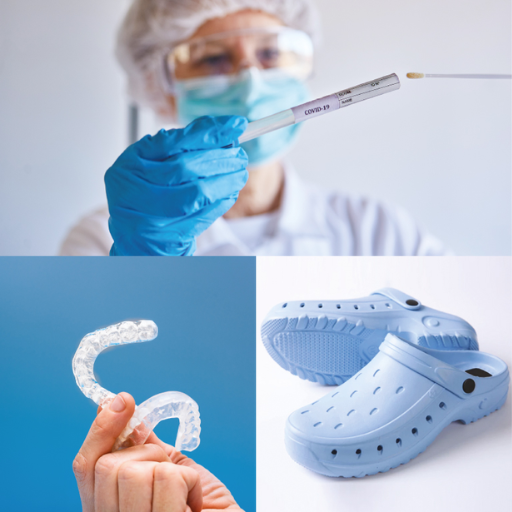
TPE (Thermoplastic Elastomer) is more advantageous than PVC (Polyvinyl Chloride) regarding flexibility, durability, and environmental concerns. For their use in medical applications, TPEs must be non-toxic and reusable; this is also why they are used in automotive parts like seals and gaskets, which require high wear resistance. Furthermore, TPE is also used in consumer products like grips and seals where comfort and stretchability are essential. TPE’s absence of harmful additives and recycling ability make it a positive, eco-friendly alternative in these areas.
Automotive Applications for TPE
Because of their increasing importance due to unique features of flexibility, durability, and resistance to environmental factors, thermoplastic elastomers (TPE) are becoming increasingly important in the automotive sector. For example, TPE is used in dashboards, airbag covers, and floor mats. The ability of TPE to withstand extreme temperatures makes it worthwhile in both vehicle interiors and exteriors. TPE is also employed in critical sealing parts such as window and door seals; its superior elasticity provides an airtight, waterproof fit, which minimizes noise and enhances energy efficiency.
Due to its excellent chemical and high heat resistance, TPE is used for sealing applications, wires, tubes, and other under-the-hood parts. It also aids in lightweight design for automobiles, a top priority for lowering vehicle emissions and meeting environmental regulations. The undeniable blend of TPE’s material properties makes it a highly versatile choice in automotive manufacturing without compromising durability and ecological objectives.
Medical Equipment and TPE
Thermoplastic elastomers (TPEs) are vital in medical equipment production because of their easy processing, flexibility, and biocompatible characteristics. TPEs are suitable for manufacturing medical devices like catheters, tubing, and syringe plungers, which require precision and comfort. TPEs are biocompatible, which means they can safely be used for devices that come in contact with the body. Other benefits include the ability to be sterilized through autoclaving, gamma radiation, or isotopes, which broadens its usage in sterile environments. In addition, TPE’s tailored soft formulations allow the self-regulating balance of softness, elasticity, and durability to be altered based on the particular device’s needs. Thus, TPEs are ideal for both long-term and single-use medical products.
Consumer Products Using TPE
Thermoplastic elastomers, or TPEs, are products whose relevance permeates the consumer goods industry. This is owing to their unique characteristics of flexibility, durability, and the ability to be tailored to best suit their application. A good instance of this would be the utilization of TPEs in soft-touch grips of tools, toothbrushes, and kitchen utensils. TPEs increase the ergonomics of these implements and enhance their safety. They are used in phone cases and other handheld devices because of their slip-resistant surfaces which enhances the grip without being visually unappealing. Their use in the footwear industry, especially in shoe soles, is because of their lightweight and shock-absorbing properties. Together with their durability and recyclability, TPEs are vital in making sustainable and high-performing consumer products. It is undeniable that TPEs are transforming modern consumer products by providing unparalleled functionality and comfort.
Is PVC or TPE More Cost-Effective?

Regarding initial comparisons, PVC is often considered more cost-effective owing to cheaper production costs and widespread availability. TPEs seem to be a better investment when long-term usage is considered due to their versatility and ability to withstand heat. The choice relies on the application. PVC works best for economical projects when budget is the primary concern.
Cost Analysis of TPE
The cost model of thermoplastic elastomers (TPE) is unique in that it considers the financial outlay in terms of both short-term and long-term value. Compared to PVC or rubber, TPE’s upfront price is considerably higher, but its unmatched advantages may make this expense worthwhile over time. TPE’s remarkable durability reduces maintenance and lifecycle costs by significantly decreasing the need for durable component replacements in high-performance applications. Furthermore, TPEs benefit sustainability initiatives since they can lower costs through reprocessing and reusing production waste materials, resulting in reduced material loss. Further, the latest developments in TPE formulations have enhanced the material’s cost-performance ratio, rendering it an even more attractive option. This is particularly true for the automotive, medical, and consumer electronics sectors, where operational productivity and product lifespan depend on material performance.
Cost Analysis of PVC
Polyvinyl Chloride, or PVC, is a dominant material used in various industries because of its lower cost than raw materials and versatility. In contrast to polyethylene (PE) and polypropylene (PP), PVC is much cheaper, which makes it easier to scale economically. Moreover, its durable nature and low maintenance needs bolster its long-term cost effectiveness.
Supply chain conditions, grade of resin, demand on the market, and the region greatly influence the average global price of PVC, which, according to recent trends, ranges anywhere from 900 to 1300 per metric ton. Lower international prices of PVC also improve its cost effectiveness. When combined with its capability of additives, PVC can be modified to improve mechanical properties such as weatherability, impact resistance, flexibility, and many more without significantly increasing the cost. To illustrate, rigid PVC, which is primarily used in the construction sector, is impacted by these additives, allowing for the manufacturing of pipes and window frames that are durable and long-lasting.
Recycling and reusing materials are becoming more critical in the context of PVC’s finances, given that the industry is starting to utilize post-consumer and post-industrial recycled PVC for sustainability purposes while simultaneously reducing material expenses. These improvements in recycling processes can help manufacturers achieve a competitive edge in sustainable markets as they make it possible to reduce dependency on virgin material. Overall, PVC’s low cost, versatility, and durable performance sustain its importance as a critical material for industrial applications sensitive to pricing.
Long-term Cost Considerations
Considering the use of PVC in industrial applications, a few key determinants arise regarding the prospects of cost savings. The material’s longevity and resistance to external menace factors are a persevering approach to recurrent replacements and repairs, which is significantly lower. PVC’s long string of advantages as a construction material lowers its ongoing operational costs. It sustains its overall maintenance expenses, especially over time, in harsh, demanding surroundings like construction, plumbing, or electrical installations. Coupled with the reduced expenditures promoted by using recycled materials, lower production costs, and reduced waste, PVC becomes more resilient during further construction.
Market information also highlights that increased PVC usage in sustainable construction offers significant economic benefits. PVC’s insulation properties and its window frame usage enhance energy efficiency and lower a building’s overall operational costs. In addition, PVC’s recyclability means that disposal costs are eliminated at the end of life since many industries operate closed-loop systems to optimize material reclamation. All these factors reaffirm PVC’s financial and sustainable advantages for long-term industrial and commercial use.
Reference Sources
-
Material Comparison: TPE vs. PVC – Timco Rubber
This article highlights the fundamental differences between TPE and PVC, focusing on their material properties and applications. -
TPE vs PVC: What’s the Difference? – EuroPlas
A detailed comparison of TPE and PVC, including their elasticity, composition, and typical uses. -
PVC vs. TPE Profiles – VAV Group
This source compares PVC and TPE’s durability, cost, and environmental benefits. - Top TPE Plastic Pellets Suppliers in China
Frequently Asked Questions
Q: What are the main differences between PVC and TPE?
A: PVC, or polyvinyl chloride, is a plastic known for its durability, chemical resistance, and wide range of applications, including construction and cable insulation. TPE, or thermoplastic elastomer, is a polymer with rubber-like flexibility, making it suitable for applications that require stretchability and impact resistance. The main differences are their flexibility, environmental impact, and specific applications.
Q: How do PVC and TPE compare in terms of environmental impact?
A: TPE is generally considered more environmentally friendly compared to PVC. PVC often contains plasticizers and can release harmful chemicals if not correctly managed. On the other hand, TPE is non-toxic and can be recycled more easily, reducing its environmental footprint.
Q: Is TPE better than PVC for medical devices?
A: TPE is often better than PVC for medical devices due to its non-toxic nature and excellent biocompatibility. It also offers flexibility and can withstand sterilization, making it suitable for medical applications.
Q: Can PVC and TPE withstand high temperatures?
A: TPE generally performs better than PVC at high temperatures, maintaining flexibility and properties. PVC can degrade or release harmful chemicals when exposed to high temperatures, making TPE a more suitable for heat applications.
Q: What are the advantages of using PVC in construction?
A: PVC is widely used in construction due to its durability, cost-effectiveness, and chemical resistance. It is commonly used for piping, windows, and insulation materials because of its ability to withstand harsh environmental conditions.
Q: How does the flexibility of PVC compare to TPE?
A: TPE is inherently more flexible than PVC, making it ideal for applications requiring elasticity, such as automotive parts and flexible tubing. PVC can be modified to be flexible using plasticizers, but it does not match the natural stretchability of TPE.
Q: Are there specific applications where PVC is preferred over TPE?
A: PVC is preferred in applications that require a more rigid and durable material, such as construction piping, window frames, and vinyl flooring. Its cost-effectiveness and chemical resistance make it a popular choice in industries where these properties are critical.
Q: What role do plasticizers play in the properties of PVC?
A: Plasticizers are added to PVC to increase flexibility and make it more pliable for applications like flexible tubing and soft PVC products. However, using plasticizers can affect the environmental impact of PVC, as they may leach out over time.
Q: How do PVC and TPE compare in terms of chemical resistance?
A: Both PVC and TPE offer good chemical resistance, but PVC is generally superior in resisting a wide range of chemicals, making it suitable for industrial applications. TPE provides adequate chemical resistance for many uses, but it might not match the level of PVC.
Q: What factors should be considered when choosing between PVC and TPE?
A: When choosing between PVC and TPE, consider flexibility, environmental impact, specific application requirements, temperature resistance, and cost. The decision should be based on each material’s unique properties and their alignment with the intended use.


